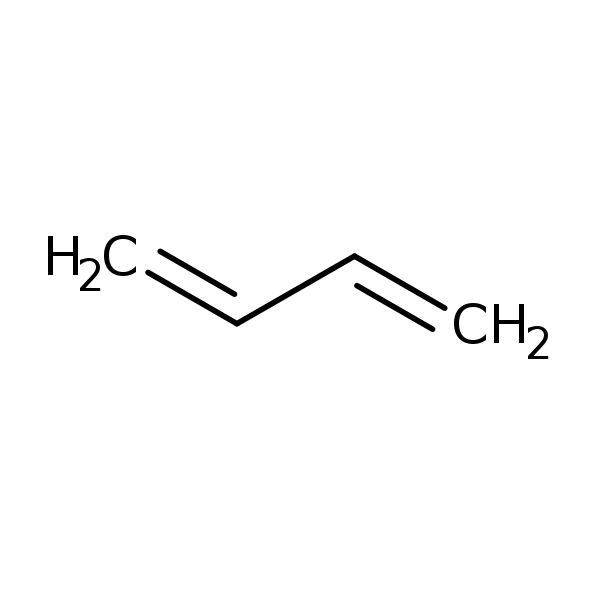1,3-Butadiene
CASRN 106-99-0 | DTXSID3020203
- IRIS Summary (PDF) (27 pp, 187 K)
- Supporting Documents for 1,3-Butadiene
On this page:
Noncancer Assessment
Reference Dose for Oral Exposure (RfD) (PDF) (27 pp, 187 K) Last Updated: 11/05/2002
Information reviewed but value not estimated.
Reference Concentration for Inhalation Exposure (RfC) (PDF) (27 pp, 187 K) Last Updated: 11/05/2002
| System | RfC (mg/m3) | Basis | PoD | Composite UF | Confidence |
|---|---|---|---|---|---|
| Reproductive | 2 x 10 -3 | Ovarian atrophy |
BMCL
10
(HEC):
1.98
mg/m3 |
1000 | Medium |
Cancer Assessment
Weight of Evidence for Cancer (PDF)
(27 pp, 187 K)
Last Updated: 11/05/2002
| WOE Characterization | Framework for WOE Characterization |
|---|---|
| Carcinogenic to humans | Revised Draft Guidelines for Carcinogen Risk Assessment (U.S. EPA, 1999) |
- Under EPA's 1999 Guidelines for Carcinogen Risk Assessment (U.S. EPA, 1999), 1,3-butadiene is characterized as carcinogenic to humans by inhalation. This characterization is supported by the total weight of evidence provided by the following: (1) sufficient evidence from epidemiologic studies of the majority of U.S. workers occupationally exposed to 1,3-butadiene, either to the monomer or to the polymer by inhalation, showing increased lymphohematopoietic cancers and a dose-response relationship for leukemias in polymer workers (see Section II.A.2), (2) sufficient evidence in laboratory animal studies showing that 1,3-butadiene causes tumors at multiple sites in mice and rats by inhalation (see Section II.A.3), and (3) numerous studies consistently demonstrating that 1,3-butadiene is metabolized into genotoxic metabolites by experimental animals and humans (see Section II.A.4). The specific mechanisms of 1,3-butadiene-induced carcinogenesis are unknown however, the scientific evidence strongly suggests that the carcinogenic effects are mediated by genotoxic metabolites of 1,3-butadiene, i.e., the monoepoxide, the diepoxide, and the epoxydiol.
- This may be a synopsis of the full weight-of-evidence narrative.
Quantitative Estimate of Carcinogenic Risk from Oral Exposure (PDF) (27 pp, 187 K)
Information reviewed but value not estimated.
Quantitative Estimate of Carcinogenic Risk from Inhalation Exposure (PDF) (27 pp, 187 K)
Inhalation Unit Risk:
3
x 10-5
per µg/m3
Extrapolation Method: Linear extrapolation from LEC01 (0.254 ppm); LEC01 derived from linear relative rate model (RR = 1 + (B)(x)) using lifetable analysis with leukemia incidence data; an adjustment factor of 2 was applied.
Tumor site(s): Hematologic
Tumor type(s): Leukemia (Health Canada, 1998; U.S. EPA, 2002)
Chemical Documents
Nov 2002: Health Assessment Of 1,3-Butadiene (Report)
Jan 1998: Health Assessment Document for 1,3-Butadiene (External Review Draft) (Report)
Jan 1989: HEALTH AND ENVIRONMENTAL EFFECTS DOCUMENT FOR 1,3-BUTADIENE (Report)
Sep 1985: MUTAGENICITY AND CARCINOGENICITY ASSESSMENT OF 1,3-BUTADIENE (Report)
Feb 1985: MUTAGENICITY AND CARCINOGENICITY ASSESSMENT OF 1,3-BUTADIENE. REVIEW DRAFT (Report)
Dec 1983: Health And Environmental Effects Profile for 2-Chloro-1,3-Butadiene (Report)
May 1983: Health And Environmental Effects Profile for 1,3-Butadiene (Report)
Other EPA Information
- Human Health Benchmarks for Pesticides (HHBP). This database provides human health benchmarks for pesticides that may be present in drinking water.
- Office of Pesticide Programs Pesticide Chemical Search. This database provides links to health effects information and registration status for pesticides.
- Chemistry Dashboard. This database provides information on chemical structures, experimental and predicted physicochemical, and toxicity data.
Critical Effects
Tumor Sites
Chemical Structure

Synonyms
- Biethylene
- Bivinyl
- Buta-1,3-dieen
- Buta-1,3-dien
- Butadieen
- Butadien
- Butadiene
- Butadiene, 1,3-
- Divinyl
- Erythrene
- NCI-C50602
- Pyrrolylene
- Vinylethylene
- alpha,gamma-Butadiene
- 1,3-Butadiene
- 106-99-0


